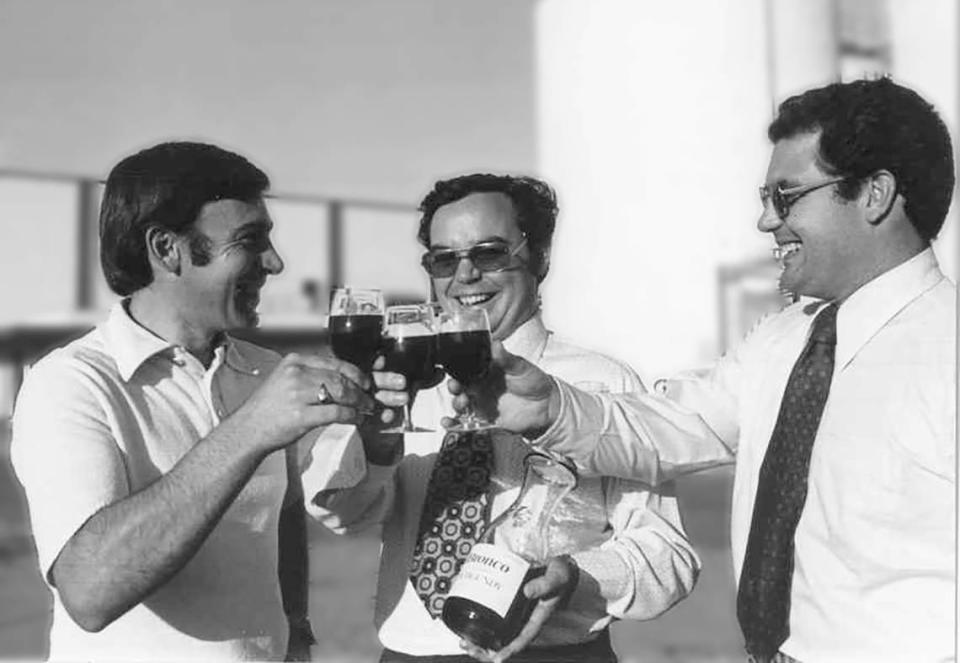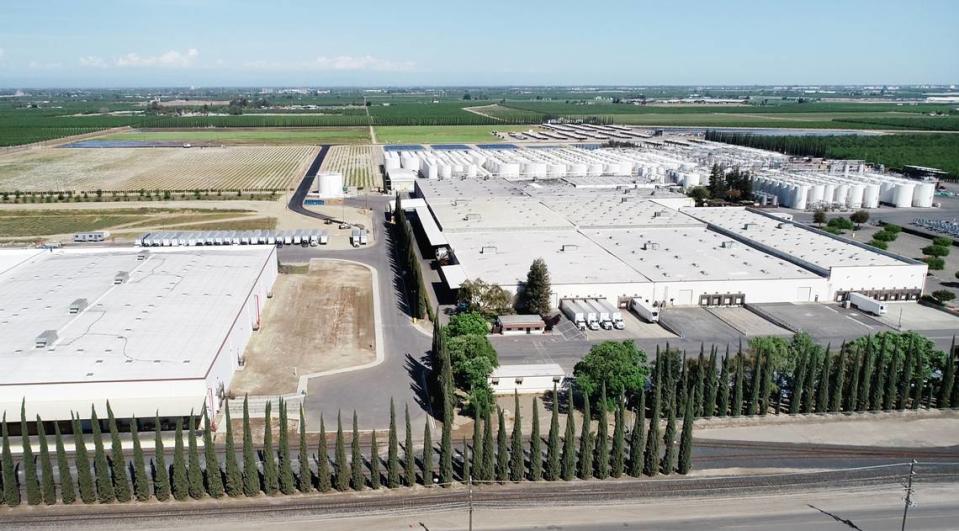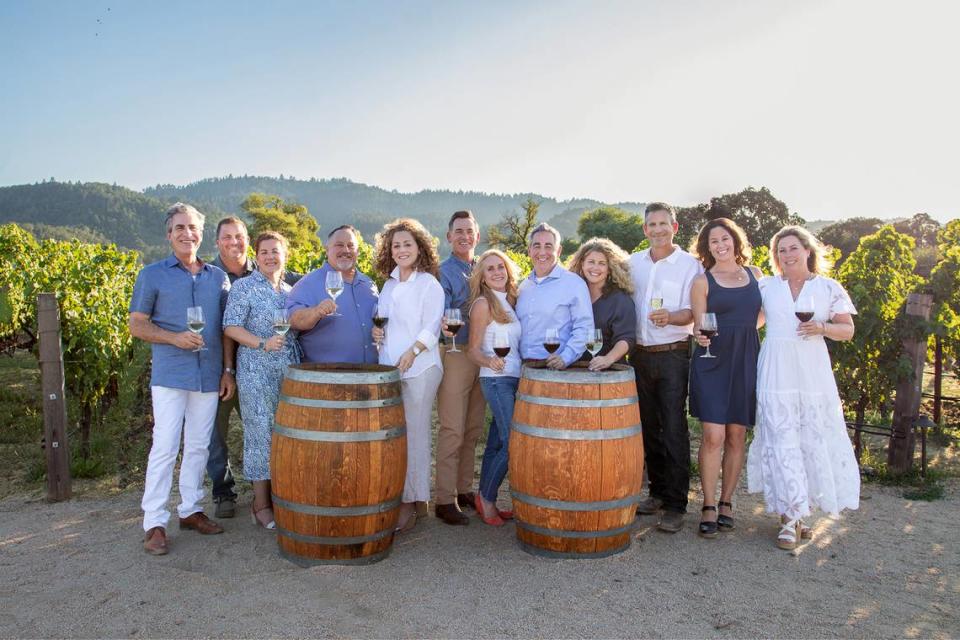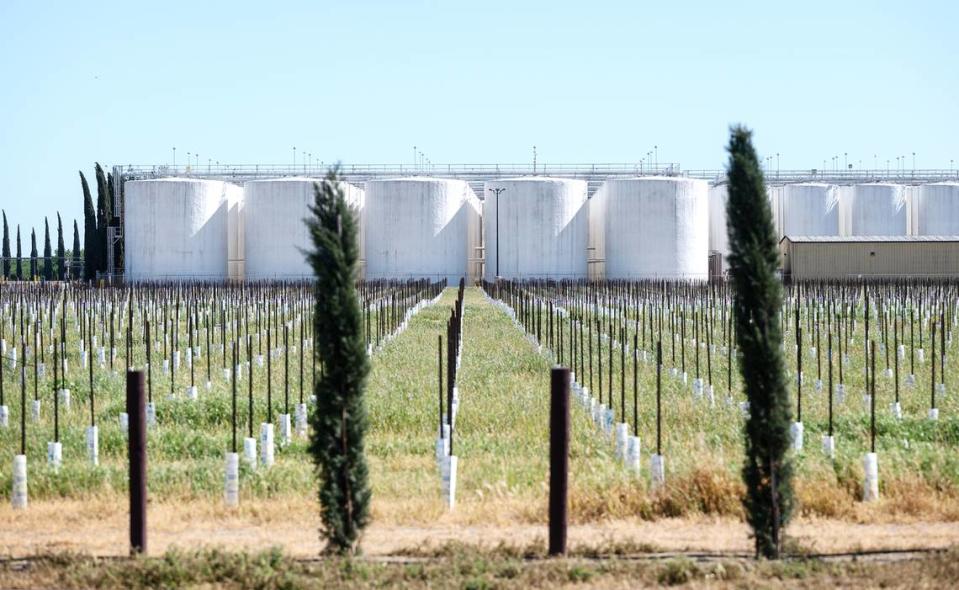New generation leads Bronco Wine, maker of Two Buck Chuck and other Central Valley products
Bronco Wine Co. has reached its 50th anniversary with new leaders at the top but the same attention to consumer tastes.
The company employs about 750 people year-round at plants in or near Ceres, Escalon, Madera and Napa. It hires 100 to 125 more to harvest and crush grapes each August to November.
Bronco is likely best known for the Charles Shaw label, initially selling for $1.99 at Trader Joe’s stores in 2002. Fans still call it Two Buck Chuck even though it has reached $3.49 to cover production costs.
Bronco also has brands at midrange and higher prices, including marketing deals with other wineries in the United States, South America and Europe.
The array of choices will help attract the next generation of drinkers, said Dan Leonard, the company’s new president and chief executive officer.
“We’ve got to find where the consumer is and go to them and find out what it is that they identify with and try to fulfill that need,” he said. “Our goal is to have wine on every single table.”
Leonard has been with Bronco since 1986, most recently as senior vice president and chief financial officer. He spoke with The Bee on Jan. 23 at the Bronco headquarters off Keyes Road south of Ceres.
Leonard succeeded co-founder Fred Franzia, who died in 2022. Franzia started the business on Dec. 27, 1973, with his brother, Joseph, and their cousin John Franzia.
Joseph and John no longer serve on the Bronco board of directors. It is now chaired by Michael Franzia, part of the second generation. He was on hand for The Bee’s visit, which also touched on sustainable practices.

Bronco has deep local roots
Bronco is fairly big, but it is far from the biggest player in the wine industry. That would be E.&J. Gallo Winery of Modesto. Neither of these family-owned businesses discloses earnings or volume figures.
The Bronco founders are grandsons of Teresa and Guiseppe Franzia, who started their own winery in 1906 near today’s Highway 120 northeast of Ripon.
That plant is now owned by Livermore-based The Wine Group, another industry leader. Its top brand is Franzia boxed wine, which has no legal connection with the family.
Bronco began by building the Ceres-area plant. Two years later, The Bee reported that it was doing well.
“Our philosophy is simply to get the best possible wine to consumers at the lowest possible price,” Fred Franzia said.
At the time, customers spent 99 cents for a quart-size carafe of Bronco cabernet sauvignon. Adjusted for inflation, the price would be $5.43 today.
In that Bee story, the partners explained how they made wine affordable: They had access to a large grape supply. They did their own distribution, skipping the middleman. And family-owned companies can be more nimble than those held by outside investors.
“We’ve got a big advantage since we have no ‘earnings-per-share’ monster to feed in New York,” John Franzia said.
The original plant still does most of Bronco’s crushing, fermenting and aging. It also bottles the sparkling-wine part of the portfolio.
Bronco later purchased two other plants to add to its capacity. One is the former Petri Winery on Highway 120 west of Escalon. The other was the Simpson Meadow Winery on Road 20 southwest of Madera. Bronco built its own plant at the south end of Napa to bottle all of the still wines.

Just one tasting room, in Oakland
Bronco does not have tasting rooms at its Central Valley operations, reflecting its preference for keeping a low profile. It does operate one at Jack London Square in Oakland for the coastal Rosenblum Cellars label.
Bronco’s other premium brands include Carmenet, Picket Fence, Longevity and the Rare Earth organic wine. At the lower end is Fox Brook, sold at Save Mart at a price similar to Two Buck Chuck. Salmon Creek is a restaurant-only product inspired by Fred Franzia’s belief that wine lists were too pricey.
The current leaders noted several challenges for the industry: Climate change could disrupt water supplies. Young adults have a range of drink choices besides wine, including beer and liquor. Some seek wine with little or no alcohol, which is tricky to make without harming the taste.
Michael Franzia said the typical consumer today drinks less wine on average than in the past, but spends more per bottle.
“We have the scale to meet people where they are,” he said. “We have the ability to cover the market at different price points to meet those demands.”
Bronco does not have expansion plans that would result in a major increase in jobs. Its website does list 20 openings as of Friday in the current operation.
Caring for the land while making wine
About 2,000 of Bronco’s 32,000 vineyard acres in the state are certified organic under federal rules. They can have no synthetic fertilizers or pesticides.
The rest of the operation has other practices aimed at sustainability, Leonard said. Grasses and other vegetation grow between the vine rows, breaking down into the soil after mowing. The vines are irrigated sparingly, which concentrates the grape flavor.
Bronco reports sending just 0.22% of its waste to landfills. The stems and skins left after grape crushing can enrich soil. Excess glass and cardboard can be recycled.
At the plant near Ceres, some of the products start their journey to consumers on a Union Pacific Railroad track. “We take 3.2 trucks off the road for every rail car we ship,” Leonard said.
These practices got Bronco certified by the California Sustainable Winegrowing Alliance. It also hopes to install solar panels on some of its land, feeding power into the grid.



